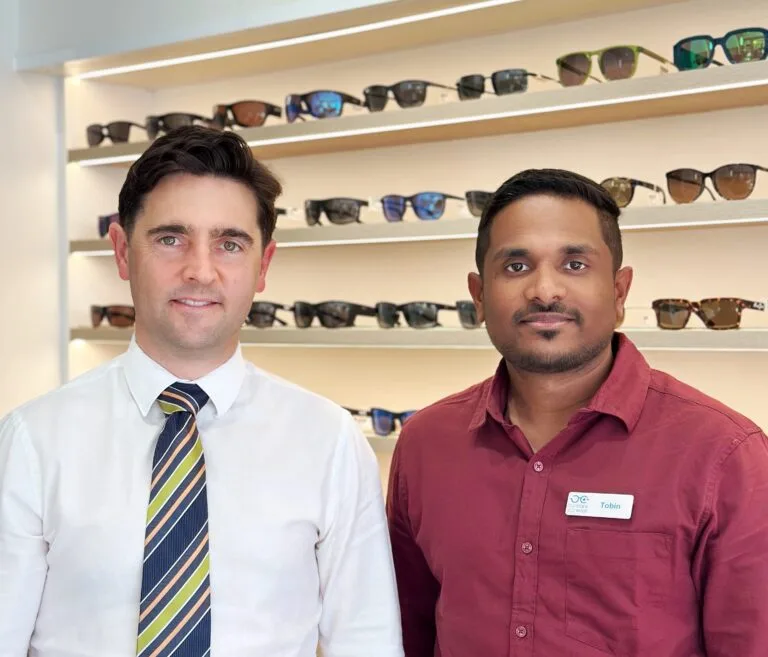
Precision Eye Tracking: Understanding Your Vision with the Clinical Eye Tracker
Your eyes are constantly moving, even when you think they’re still. These tiny, rapid movements are critical for reading, tracking objects, shifting gaze, and interacting with the world around you. When these eye movements aren’t working efficiently, it can lead to a range of visual difficulties and learning challenges.
At our Dalby practice, we utilize the Thomson Software Solutions Clinical Eye Tracker, a state-of-the-art diagnostic tool that objectively measures and analyzes these precise eye movements. Unlike subjective observations, this advanced system provides quantifiable data on how your eyes are working together, how accurately they track, and how efficiently they process visual information.
It’s like getting a detailed “report card” on your eye movement skills!
Why is Advanced Eye Tracking Important?
Efficient and accurate eye movements are fundamental for:
- Reading Fluency: Smooth eye movements (saccades and pursuits) are essential for scanning text effortlessly.
- Learning and Concentration: Difficulty with eye tracking can impact attention span and the ability to absorb information from screens or books.
- Sports and Daily Activities: Precise eye movements are critical for tracking moving objects, judging distances, and coordination.
- Diagnosing Hidden Issues: Many visual problems related to eye movements are not detected in a standard eye chart test. The Eye Tracker can pinpoint these subtle deficiencies.
- Guiding Therapy: Objective data helps your eye care professional tailor specific vision therapy exercises to improve identified deficits, leading to more effective outcomes.
By thoroughly analyzing how your eyes move, we can uncover underlying visual processing challenges that might be impacting your performance in school, work, or daily life.
What Conditions Can the Clinical Eye Tracker Help Assess?
The Thomson Software Solutions Clinical Eye Tracker is an invaluable tool for assessing and helping to manage a variety of conditions and visual challenges, including:
- Reading Difficulties: Identifying specific eye movement inefficiencies (e.g., poor tracking, excessive re-reading, skipping lines) that contribute to slow reading speed, comprehension issues, or fatigue.
- Learning Difficulties: Understanding how eye movements might be impacting academic performance, attention, or visual information processing.
- Concussion or Traumatic Brain Injury (TBI): Eye movement abnormalities are common after head injuries. The Eye Tracker can objectively assess these changes and monitor recovery.
- Balance and Dizziness: Eye movements are closely linked to the vestibular (balance) system. Abnormalities can sometimes indicate underlying vestibular issues.
- Amblyopia (“Lazy Eye”) and Strabismus (“Crossed Eyes”): Assessing how eyes work together and track, even after initial treatment.
- Attention Deficit Hyperactivity Disorder (ADHD): Research suggests a correlation between certain eye movement patterns and attention challenges.
- Vision Therapy Progress: Objectively tracking improvements in eye movement control throughout a vision therapy program.
What to Expect During Your Eye Tracker Assessment?
The assessment using the Thomson Software Solutions Clinical Eye Tracker is simple, comfortable, and completely non-invasive.
- Positioning: You will sit comfortably in front of a computer screen, usually with your chin resting in a support to keep your head steady.
- Calibration: The system will briefly calibrate by asking you to look at a few moving targets on the screen. This ensures accurate tracking of your eyes.
- Interactive Tasks: You will then perform a series of short, engaging visual tasks on the screen. This might involve:
- Following a moving target with your eyes.
- Reading text or numbers that appear on the screen.
- Shifting your gaze quickly between different points.
- No Discomfort: There are no lights flashed into your eyes, and no contact with your eyes. You simply watch the screen.
- Quick Process: The entire assessment typically takes only 5-15 minutes, depending on the specific tests performed.
- Results Discussion: Your optometrist will then review the detailed, objective reports generated by the Eye Tracker. They will explain your eye movement patterns, highlight any areas of concern, and discuss how these findings relate to your visual symptoms or performance, as well as recommend any necessary steps or therapies.
At our Dalby practice, we’re dedicated to uncovering the full picture of your visual abilities. The Clinical Eye Tracker helps us provide a level of insight that goes beyond standard testing, leading to more targeted and effective solutions for your visual health and performance.
If you or a family member are experiencing reading difficulties, learning challenges, or other visual discomfort, ask us about a Clinical Eye Tracker assessment today!

Meet Our Optometrists – Tom Roger & Tobin Eapen
The Eyecare Eyewear Optometry Team has been trained to provided you with comprehensive, personalised advice regarding your current and future visual needs. The combination of years of experience and an accomplished, professional optical dispensing team means that you will receive the highest level in vision care and ocular disease management.